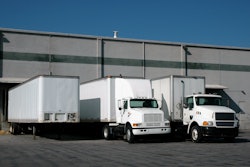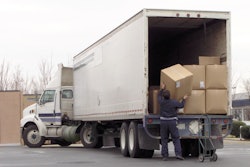Supply chain issues have dominated trucking, manufacturing, freight, shipping and retail news for several years. From raw materials to the products people take into their homes, no industry has gone unscathed and the future of moving freight looks to be as challenging.
A challenging freight environment means those shipping goods must be more resourceful. Fortunately, there are several options freight businesses have, such as freight matching and long-term planning, so that they can keep transporting goods regardless of what the industry, in general, is encountering.
Freight matching
Freight Matching is the process of providing transportation companies, or individual truckers, with online listings of goods that need transporting, enabling both parties to find drivers and transportation requirements that meet their availability and needs.
How it works is that someone with goods that need to be shipped posts the shipment details on an online message board that drivers examine via a mobile app. When a driver sees an order, deadline, or job description they like, they select that order. If the freight manager accepts them, the driver fulfills the order per the agreed-upon terms.
The purpose of freight matching is to streamline matching drivers with people that have goods that need to be shipped. That benefits freight companies by giving companies plenty of options regarding drivers.
Drivers gain the advantage of being able to select what they want to deliver on their own terms rather than waiting for an assignment or contending with stalled freight traffic.
Expect the unexpected
Freight lines and the business of freight transportation are highly reactionary environments. The list of things that can create a bottleneck or delay in delivery is incredibly long. Those bottlenecks and delays affect the delivery of goods and can impact their availability and, in some cases, their existence. Most are also out of the control of the average freight manager.
The only way to address potential delays or lack of availability of goods is to anticipate and adapt when problems arise.
Monitor the news and anticipate how a rail strike might affect the delivery of goods. Watch the weather (regionally and in general) to get a heads up on when snow or storms might shut down shipping avenues. Pay attention to reports of port bottlenecks that could delay the unloading of container ships.
The earlier you anticipate a delay the more time you have to prepare for it. As you seek to stay up-to-date, don’t rely on unverifiable industry rumors. Instead, focus on sources you can trust that don’t have any interest other than delivering news.
Always be planning
The mantra of sales is “always be closing.” In shipping freight, the mantra must be “always be planning.” Develop contingencies to move freight if a driver or trucking fleet falls through and to cope with the current shortage of drivers. Have alternative transportation means ready for implementation. When possible, stockpile goods in anticipation of gluts in transportation channels.
Planning for problems is more than acknowledging they exist or might become an issue. A comprehensive plan entails considering all the possible obstacles and challenges you will face and developing contingencies to address each of them. You will also have to work with multiple parties along your supply chain to ensure they understand your situation.
That includes mapping out for them the obstacles you face and what you want them to do to help you overcome those challenges. To do that effectively, you must constantly analyze the existing environment and build a strong and reliable network of contacts to help you implement a contingency when needed.
How does planning differ from anticipating issues? Planning involves having resolutions to problems that you can employ as soon as they emerge. For example, develop multiple vendors for all your products so that if one falls through, you have other options. The same applies to transportation companies and alternatives.
Build relationships
Relationships have always been important, but now, more than ever, having good relationships with drivers, logistics managers, shippers, freight forwarders, retailers, etc., is critical. Having well-defined networks with all of the above is vital to get assistance, preferential treatment and advice whenever freight movement obstacles emerge.
There are a few ways of doing this: Build transparency into every order to avoid confusion; pay invoices on time; be flexible with vendors to ensure they are flexible when you need them to be; ensure that all orders are exactly as advertised; and do not take advantage of good relationships
As with any type of business, the relationships you build will help you in good times but be invaluable during challenging times. For example, if you have a delivery company you usually use and always make sure that you pay their invoices on time, they are much more likely to work with you when you are under a crunch.
Be flexible
The key to overcoming supply chain obstacles is flexibility and willingness to embrace new methods of delivery, technology and tactics to make sure your freight gets where it needs to go on schedule. Have backup delivery routes and delivery methods in place. Use freight management tools like freight matching to maximize delivery options.
Anything you can do to ensure flexibility in your delivery routine increases the chances of your freight reaching its destination on time and within budget. Establish new delivery routes and have alternatives ready to be implemented at a moment’s notice. Utilize warehousing strategies and be able to shift supplies when needed.
The more flexible you are regarding getting your freight through the supply chain, the more options you have. With more options, you’ll be more likely to have some avenue of delivery that will let you get your freight where you need it.
Moving freight through the supply chain has been challenging for several years. That trend is likely to continue for the foreseeable future. The key to getting your freight where you want it when you need it to get there is to utilize suitable tactics, such as building relationships and freight manning, and be open to any other alternatives that come your way.













